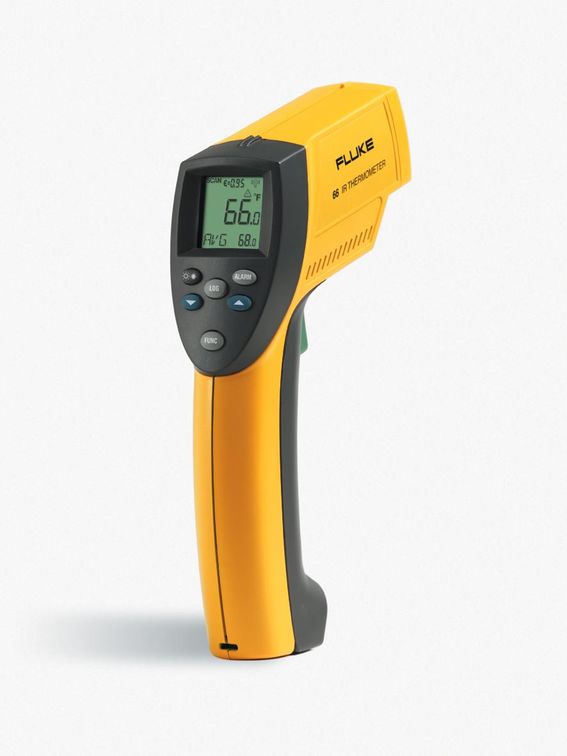The Advantages of Using IR Thermometers
Temperature is the most frequently measured physical quantity, second only to time.
Temperature plays an important role as an indicator of the condition of a product or piece of
machinery, both in manufacturing and in quality control. Accurate temperature monitoring
improves product quality and increases productivity. Downtimes are decreased, since the
manufacturing processes can proceed without interruption and under optimal conditions.
Infrared technology is not a new phenomenonóit has been utilized successfully in industrial
and research settings for decadesóbut new innovations have reduced costs, increased
reliability, and resulted in noncontact infrared sensors offering smaller units of measurement.
All of these factors have led infrared technology to become an area of interest for new kinds
of applications and users.
What are the advantages offered by noncontact temperature measurement?
- It is fast (in the ms range)ótime is saved, allowing for more measurements and
accumulation of data (determination of temperature field). - It facilitates measurement of moving targets (conveyor processes).
- Measurements can be taken of hazardous or physically inaccessible objects
(high-voltage parts, great measurement distance). - Measurements of high temperatures (greater than 1300°C) present no problems. In
similar cases, contact thermometers cannot be used, or have a limited life. - There is no interferenceóno energy is lost from the target. For example, in the case
of a poor heat conductor such as plastic or wood, measurements are extremely
accurate with no distortion of measured values, as compared to measurements with
contact thermometers. - There is no risk of contamination and no mechanical effect on the surface of the
object; thus wear-free. Lacquered surfaces, for example, are not scratched and soft
surfaces can also be measured.
Having enumerated the advantages, there remains the question of what to keep in mind
when using an IR thermometer: - The target must be optically (infrared-optically) visible to the IR thermometer. High
levels of dust or smoke make measurement less accurate. Concrete obstacles, such
as a closed metallic reaction vessel, allow for only topical measurementóthe inside
of the container cannot be measured. - The optics of the sensor must be protected from dust and condensing liquids.
(Manufacturers supply the necessary equipment for this.) - Normally, only surface temperatures can be measured, with the differing emissivities
of different material surfaces taken into account.
Summary: The main advantages of noncontact IR thermometry are speed, lack of
interference, and the ability to measure in high temperature ranges to 3000°C. Keep in
mind that only the surface temperature can be measured.
